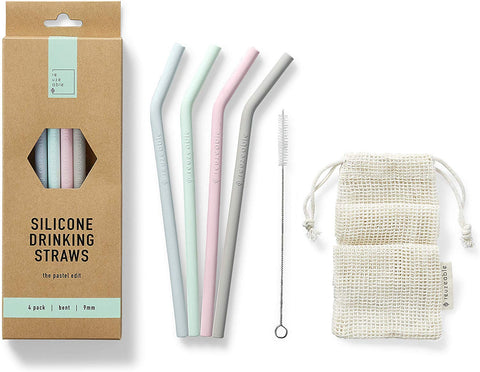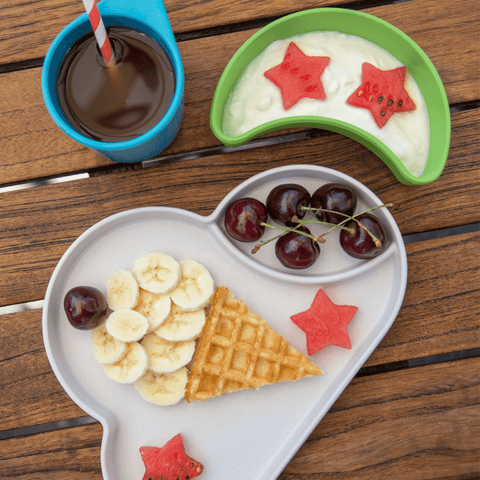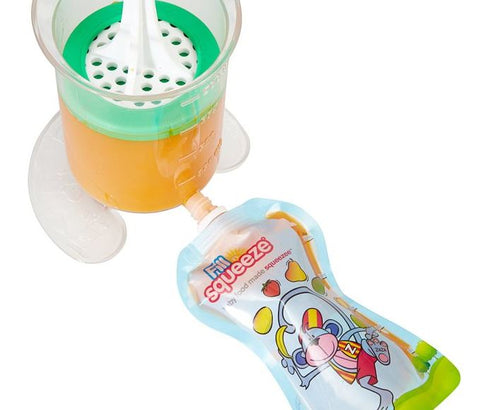
Simple Tips To Help You Reduce Plastic Waste
Simple Tips To Help You Reduce Plastic Waste
Our youngest daughter Mia cried herself to sleep after watching the first Blue Planet programme and we vowed that evening to ditch any plastic packaging that we had – the majority of the TUM TUM range was already packaged minimally in card, but we had been specifically asked by a nursery retailer to encase our weaning range in plastic for ‘hygiene purposes’. Following the Blue Planet programme, we immediately switched it all to card.
So, here are our top tips on how your family can do their bit to help reduce plastic waste.
Avoid Single Use Plastic Packaging
There is no reasonable need for products to be encased in plastic. All products should be washed thoroughly in warm soapy water before first use anyway, so the hygiene argument is defunct in our opinion. Choose products in card or minimal packaging and you’ll be doing a lot to help the environment.
Choose Recyclable & Durable Products
TUM TUM products are all made from either Polypropylene, Tritan or ABS, all of which are both recyclable and very strong materials. They are also BPA free and dishwasher safe. The product design is also robust, which means that they are able to easily deal with the physical stresses applied by young children and they will have a long life. Our Super Stable Cups are also designed to grow with your child by converting to an open sipping cup as they become more capable.

Tritan, as used in our kids’ water bottles it not only shatterproof, but also has the transparency and appearance of glass.
Stainless steel is also a safe and tough alternative to plastic. Long lasting and durable it is also dishwasher safe. It’s an ideal material for kids cutlery.
Ditch the Disposables
There is absolutely no need to for the use of plastic (single use) sandwich bags, cling film or tin foil in packed lunches. Instead, for sandwiches and snacks choose storage pots such as our nesting kids snack pots, or for hot lunches such as spaghetti bolognaise or cold salads, our thermal food flasks.


Washable and reusable, they are both good for the environment and money saving. A total win win!
Other options for younger babies are re-usable food pouches, such as these from Fill n Squeeze. Ideal for pureed foods, they allow you to easily transport home cooked foods. Later on, fruit purees can be frozen in them and they can be used to keep the toddler lunches cool at school.
Sling the Single Use Straws!
There are loads of choices of reusable straws available these days, from stainless steel to bamboo to silicone. Many come with travel bags or carry cases for taking out and about. A clever way to avoid the many millions of plastic straws that enter our oceans.

Bring on the Bamboo
There’s a new type of plastic material to the market which is much much kinder to the environment. Bamboo fibre tableware is made primarily (around 70%) from bamboo, which is a highly renewable plant. It grows very quickly and is therefore very sustainable. It’s therefore a lot kinder to the environment than alternative petroleum-based plastics.
As a material it is (if robustly designed) very hardy and is designed to be long lasting, being reinforced with melamine resin to make it extra tough. At the end of its life it’s also biodegradable, although we would encourage re-use. It also comes in some fun designs.

See our Eco Cloud Sets, which are super sturdy and in a fun weather inspired design.
10 Simple Ways To Help You Reduce Plastic Waste
Here are 10 more ways in which you can help to save the environment by reducing plastic waste.- Use a re-usable coffee cup
- Use a re-usable water bottle (don’t buy bottled water)
- Say no to (single use) plastic cutlery
- Give up teabags – use leaf tea instead
- Swap your gum – go for plastic free alternatives
- Use biodegradable glitter
- Bring back the milkman!
- Cork your wine – choose wine bottles with cork stoppers or metal screw caps instead of plastic
- Use matches instead of disposable lighters
- Use a reusable shopping bag

